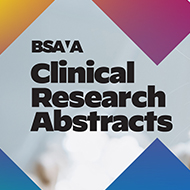Plans to reduce lab animal use welcomed by RSPCA
The plan could lead to developments of more humane alternatives.
The Royal Society for the Prevention of Cruelty to Animals (RSPCA) has welcomed the government’s commitment to a plan to reduce and replace the use of lab animals in science.
The charity says that the government’s plan, due to be published this summer, will make a difference to three million animals used in experiments each year.
The plan was announced Andrew Griffith MP, minister for science, research and innovation, during a debate in Westminster Hall last week. Mr Griffith said the plans would ‘accelerate the development, validation and uptake of technologies and methods to reduce reliance on the use of animals in science’.
As part of the plans, the government would double investments for initiatives which could lead to a reduced use of lab animals, raising investments from £10 million per year to £20 million per year in 2024/2025.
The RSPCA says that the government’s actions could play a key role in developing more humane alternatives to using animals in experiments.
Animals, such as fish, mice and rats, are commonly used in research and testing for a variety of purposes. These animals may be used to understand how human and animal bodies function, to develop and test new medicines, and to assess the safety of chemicals.
However, the RSPCA says this has raised ethical, scientific and animal welfare issues. It suggests that a number of humane alternatives, many of which are already successfully used, could be used instead of lab animals.
Among the alternatives that could be used are isolated cells and tissues, simple organisms and mathematical models.
Chris Sherwood, RSPCA’s chief executive, said: “We warmly welcome this commitment to reducing and replacing the use of animals in science, which could make a huge difference for the three million lab animals currently used in the UK each year.
“This is a positive development and comes after many years of the RSPCA leading calls for bolder action to accelerate the transition to non-animal technologies and approaches in science. The announcement of a new plan due this summer is a promising start and we look forward to seeing more detail as we all strive to create a better world for every animal.”
Image © Shutterstock



 The BSAVA has opened submissions for the BSAVA Clinical Research Abstracts 2026.
The BSAVA has opened submissions for the BSAVA Clinical Research Abstracts 2026.